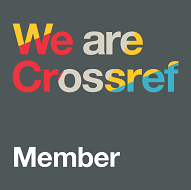Patterns of Metacognitive Skills and External Representation of Students in Chemistry Problem Solving
Abstract
Keywords
Full Text:
PDFReferences
Cao, Y., & Brizuela, B. M. (2016). High school students’ representations and understandings of electric fields. Physical Review Physics Education Research, 12(2), 20102.
Cook, M. P. (2006). Visual representations in science education: The influence of prior knowledge and cognitive load theory on instructional design principles. Science Education, 90(6), 1073–1091.
Cooper, M. M., & Sandi-Urena, S. (2009). Design and validation of an instrument to assess metacognitive skillfulness in chemistry problem solving. Journal of Chemical Education, 86(2), 240.
Cox, J. R., & Jones, B. W. (2011). External representations in the teaching and learning of introductory chemistry. Creative Education, 2(5), 461–465.
De Cock, M. (2012). Representation use and strategy choice in physics problem solving. Physical Review Special Topics-Physics Education Research, 8(2), 20117.
DeBoer, G. E. (2000). Scientific literacy: Another look at its historical and contemporary meanings and its relationship to science education reform. Journal of Research in Science Teaching: The Official Journal of the National Association for Research in Science Teaching, 37(6), 582–601.
Ibrahim, B., & Rebello, N. S. (2013). Role of mental representations in problem solving: Students’ approaches to nondirected tasks. Physical Review Special Topics-Physics Education Research, 9(2), 20106.
Ijirana, I., & Supriadi, S. (2018). Metacognitive skill profiles of chemistry education students in solving problem at low ability level. Jurnal Pendidikan IPA Indonesia, 7(2), 239–245.
Kirtikar, R. (2013). A Problem-solving approach for science learning. New Perspectives in Science Education.
Kohl, P. B., & Finkelstein, N. D. (2005). Student representational competence and self-assessment when solving physics problems. Physical Review Special Topics-Physics Education Research, 1(1), 10104.
Mansyur, J. (2015). Teachers’ and students’ preliminary stages in physics problem solving. International Education Studies, 8(9), 1–13.
Matijašević, I., Korolija, J. N., & Mandić, L. M. (2016). Translation of P= kT into a pictorial external representation by high school seniors. Chemistry Education Research and Practice, 17(4), 656–674.
Ningsih, H. Y. S. T., Mansyur, J., Kamaluddin, K., & Darsikin, D. (2013). Perilaku Penggunaan Representasi Eksternal Guru Fisika dalam Aktivitas Pembelajaran. Prosiding Seminar Nasional Pendidikan.
Nurmasyita, N., Mansyur, J., & Syamsu, S. (2013). Analisi Penggunaan Waktu Siswa dalam Tahap-Tahap Physics Problem Solving. JPFT (Jurnal Pendidikan Fisika Tadulako Online), 6(2), 7–12.
Tajudin, N. A. M., & Chinnappan, M. (2016). The Link between Higher Order Thinking Skills, Representation and Concepts in Enhancing TIMSS Tasks. International Journal of Instruction, 9(2), 199–214.
Yanti, Y. R., Amin, S. M., & Sulaiman, R. (2018). Representation of students in solving simultaneous linear equation problems based on multiple intelligence. Journal of Physics: Conference Series, 947(1), 12038.
Zhang, W., Li, Y., & Wang, S. (2019). Learning document representation via topic-enhanced LSTM model. Knowledge-Based Systems, 174, 194–204.
DOI: http://dx.doi.org/10.17977/um048v25i2p58-65
Refbacks
- There are currently no refbacks.
Copyright (c) 2021 Jurnal Ilmu Pendidikan

This work is licensed under a Creative Commons Attribution 4.0 International License.
| Jurnal Ilmu Pendidikan |
![]() Jurnal Ilmu Pendidikan is licensed under a Creative Commons Attribution 4.0 International License.
Jurnal Ilmu Pendidikan is licensed under a Creative Commons Attribution 4.0 International License.

2.png)
1.png)
1.png)
1.png)
1.png)
4.png)
.png)
1.png)
.png)
.png)


3.png)
1.png)
1.png)


